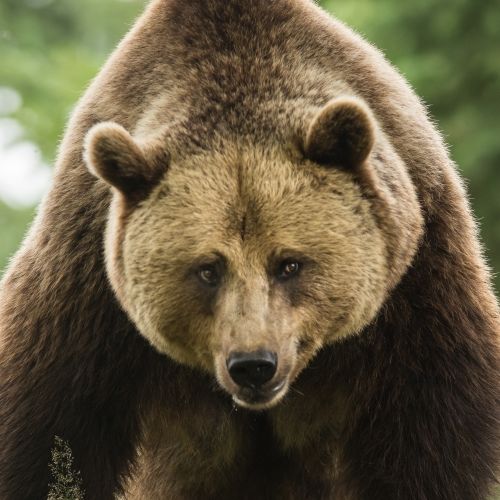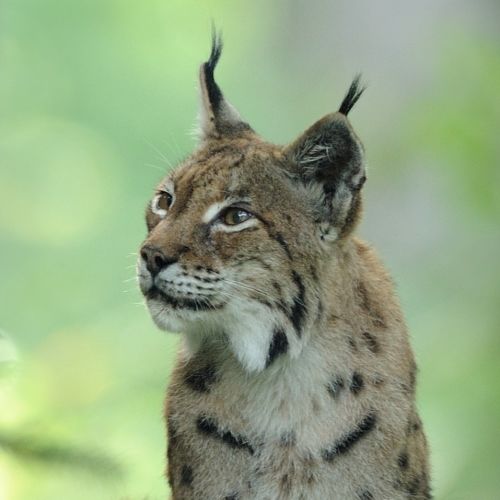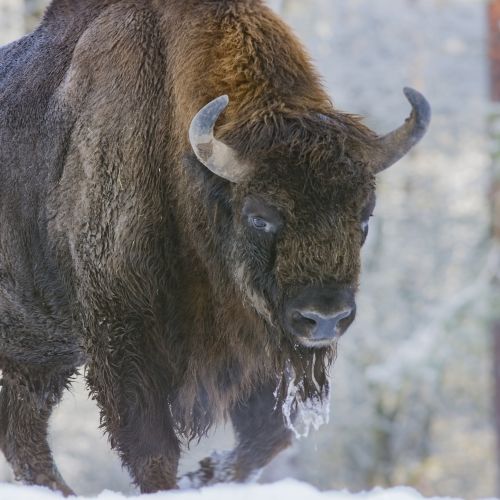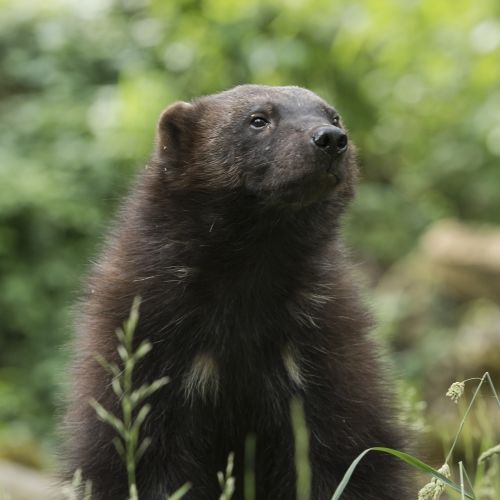The brown bear
In the Boine forest lies a charming hill where pines and hawthorns thrive. The hill is buzzing with the joyous sounds of the animals that live there. You see, a great big ball of fur ambles around the hill, climbing trees, happily gambolling with his friends, taking a bath or playfully bickering with this friends. Some of you might want to give him a great big hug, but the brown bear is definitely not a cuddly toy! The brown bear is a strong, wild animal and is the undisputed king of the hill. Watching the bears roam their hill never fails to leave a deep impression.

As strong as a bear
The bear is considered as one of the largest land predators. The bear does not fear man, nor does it fear any other animal. Its athletic qualities make it a fierce opponent: it is an extremely fast runner (it can run at a speed of up to 60 km/h), it can climb trees, swim… Fun fact: bears spend 16 hours per day hunting and foraging for food! It likes to strip the bark from trees with its fangs and large claws to eat the sapwood. In the spring, bears eat large amounts of a certain plant to build up its strength. As a matter of fact, the plant owes its name to our furry friend: around here it is known as bear’s garlic (also known as wild garlic). In the summer, bears eat up to 200 kg of food so they can bulk up and store body fat to prepare for winter.
In times gone by, the bear used to live in this neck of the woods. Charlemagne used to visit the area around Liège to hunt bears. During the Middle-Ages, defeating a bear in a hand-to-hand combat was part of the ritual of becoming a warrior, sometimes even a king. Since times immemorial, the bear has been hunted for its fur, its meat, its teeth and its claws.
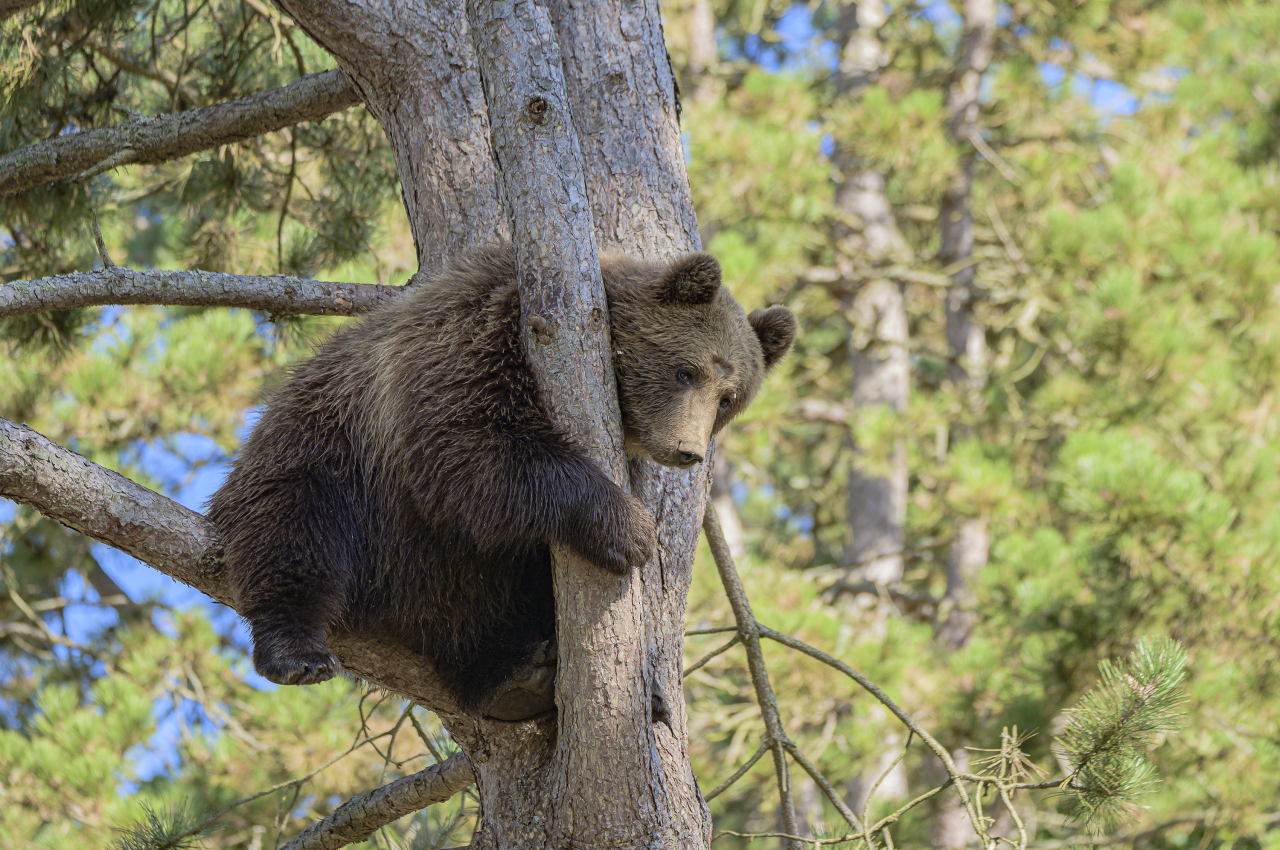
Social life
Bears live alone or in small family groups composed of the mother and her young. Mating takes place in May, but gestation only starts in the autumn, when the bears have retreated into their den. The female only gives birth once every 2 years, to 1 to 4 cubs. At birth, the tiny cubs only weigh 300 gr!
Did you know that?
Bears don’t really hibernate, they settle into a deep sleep, called winter dormancy. In the winter, they alternate between periods of deep sleep and periods of activity.
Bears have a poor eyesight. This is why they sometimes stand up on their hind legs, so they can get a better view of their surroundings!
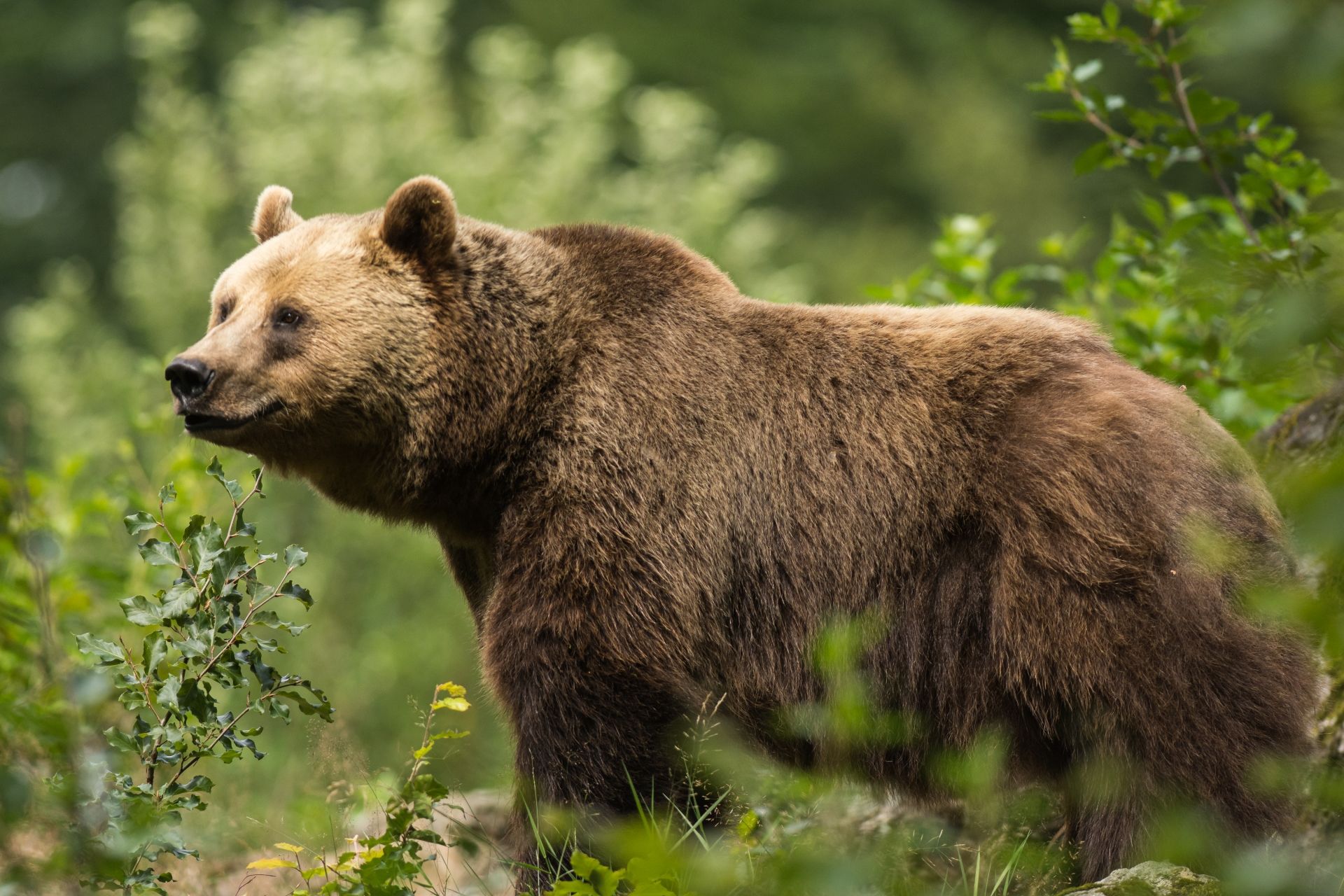
Discover the European Big 5
The bison, the wolverine, the wolf, the lynx and the brown bear
